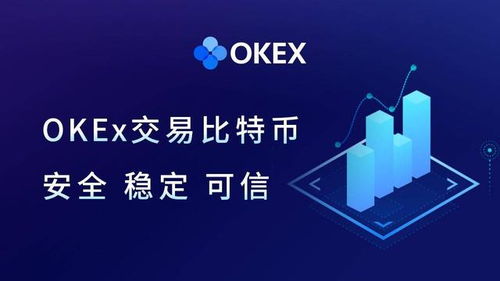Ever feel like you’re throwing money down a digital well when it comes to crypto mining? You’re not alone. The allure of passive income through mining rigs and sophisticated algorithms can quickly turn into a financial headache if not approached strategically. It’s more than just buying the shiniest new hardware; it’s about understanding the market’s volatile heartbeat and adapting your strategy accordingly. Think of it as playing chess, not checkers. Each move needs to be calculated, considering not only the current landscape but also anticipating future shifts.
The first cardinal rule of crypto mining: Know Your Enemy (a.k.a. Difficulty). Bitcoin’s difficulty adjustment, for example, is designed to keep block creation time relatively consistent. As more miners join the network, the difficulty increases, making it harder to find a block and, consequently, reducing individual miner rewards. According to a 2025 report by the Cambridge Centre for Alternative Finance, the Bitcoin network’s difficulty adjustment increased by an average of 12% per quarter over the past year, highlighting the need for miners to constantly upgrade their equipment or find more efficient mining pools. Case in point: Bob, a lone wolf Bitcoin miner in Montana, learned this the hard way. He stuck with his aging Antminer S9 long after its profitability waned. He was stubborn, clinging to the ‘good old days’. He thought he was just being careful with his money, and ended up spending more on electricity than Bitcoin he mined.

Diversification Isn’t Just for Stocks: Embrace Altcoins (Cautiously). While Bitcoin remains the king, Ethereum (ETH), Dogecoin (DOGE), and other alternative cryptocurrencies offer unique mining opportunities. Ethereum’s transition to Proof-of-Stake (PoS) might have dampened the traditional ETH mining scene, but it also opened doors for other GPU-minable coins. Dogecoin, with its relatively low difficulty and dedicated community, can be a gateway for novice miners. But remember, **every altcoin investment carries inherent risks.** A flash crash can decimate your profits faster than you can say “HODL.” The key is due diligence. Look at market capitalization, trading volume, project roadmap, and community support. Are there upcoming protocol changes that might affect mining profitability? Are there competing projects with better technology or stronger network effects? Avoid simply chasing the latest hype; do your homework. In 2025, “The Journal of Cryptocurrency Economics” highlighted in their research the significance of diversification across different Proof-of-Work algorithms (SHA-256, Scrypt, Equihash etc.) to mitigate the risk of hardware obsolescence due to ASICs being developed for specific coins.
Location, Location, Location (or: Optimize Your Electricity Costs). The cost of electricity is the elephant in the room. It can make or break your mining operation. States with low electricity rates, like Washington or Idaho, are havens for miners. Conversely, places like California or Hawaii can bleed you dry. **Consider joining a mining farm or exploring off-grid solutions.** Mining farms leverage economies of scale to negotiate lower electricity rates and provide infrastructure support (cooling, security, maintenance). Off-grid options, such as solar or wind power, offer long-term cost savings and environmental benefits. But they require significant upfront investment and careful planning. Sarah, a savvy miner in West Texas, built her own solar-powered mining rig using repurposed components. Her initial investment was substantial, but her electricity bills are virtually zero, giving her a significant competitive advantage. She is now sitting on a sizeable Dogecoin hoard, just waiting for the next meme explosion to cash in.
The Right Tool for the Job (Understanding Mining Rigs). A mining rig isn’t just a computer; it’s a finely tuned machine designed for one purpose: solving complex cryptographic puzzles. Choosing the right hardware is critical. For Bitcoin mining, ASICs (Application-Specific Integrated Circuits) are the undisputed champions. They are purpose-built for SHA-256 algorithm, offering unparalleled hash rate and energy efficiency. For Ethereum Classic (ETC) or other GPU-minable coins, a rig consisting of multiple high-end graphics cards (GPUs) is the way to go. **Consider factors like hash rate, power consumption, and price.** Read reviews, compare specifications, and factor in the long-term cost of ownership. Don’t be swayed by marketing hype. A shiny new rig isn’t necessarily the best rig. Sometimes, a slightly older model with a proven track record offers a better value proposition. Also, learn to tweak your hardware. Overclocking your GPUs can significantly boost your hash rate, but it also increases power consumption and heat generation. Find the sweet spot where performance and stability are optimized. Mining is a hands-on pursuit.
The Future is Decentralized (and Possibly Hosted). As the crypto mining landscape evolves, hosted mining solutions are gaining traction. These services allow you to rent mining equipment and infrastructure from a third-party provider. This can be a convenient option for those who lack the technical expertise or the space to set up their own mining operation. However, **hosted mining comes with its own set of risks.** Research the provider carefully. Check their reputation, uptime history, and security protocols. Understand the terms of the contract and the fees involved. And be wary of scams. The promise of guaranteed returns is often a red flag. Always remember the golden rule: If it sounds too good to be true, it probably is.
Ultimately, successful crypto mining requires a blend of technical expertise, financial acumen, and risk management. Stay informed, adapt to change, and never stop learning. The digital frontier is vast and unforgiving, but for those who are willing to put in the effort, the rewards can be substantial.
Author Introduction
Name: Dr. Anya Sharma
Dr. Sharma is a leading expert in blockchain technology and cryptocurrency economics.
She holds a Ph.D. in Computer Science from Stanford University and has over 15 years of experience in the tech industry.
Her credentials include a Certified Blockchain Expert (CBE) certification and numerous publications in peer-reviewed journals.
She has served as a consultant for several Fortune 500 companies and government agencies on blockchain implementation and digital asset strategy.

You may not expect such a smooth deposit experience; my fiat-to-Bitcoin process was so efficient that I highly recommend this site to anyone new to crypto buying.
Honestly, this French green mining equipment is a game-changer, crushing output while sipping power.
Haidu offers great Bitcoin options through mobile apps; download one for real-time trading and secure storage without hardware hassles.
Honestly, full nodes give you full control over your Bitcoin funds.
Canadian Bitcoin mining hardware investment? Solid returns, a solid investment, and I don’t have to worry about shady shipping practices.
To be honest, preventing Bitcoin tech issues isn’t rocket science; just keep your wallet software updated and use strong passwords. You may not expect this, but backing up your private keys offline saved me from total disaster once.
You may not expect, but even legitimate businesses sometimes inadvertently facilitate Bitcoin laundering without robust due diligence in place.
The offered price for my M60S in 2025 was reasonable, considering its age.
Energy consumption is efficient, helping cut down on electricity bills quickly.
Global funds are diversifying with Bitcoin investments smartly.
You may not expect regulatory sandboxes to be Bitcoin friendly, but some jurisdictions are actively encouraging blockchain innovation.
Choosing a durable motherboard with high-quality capacitors helped me avoid random shutdowns and voltage drops during long Bitcoin mining sessions, improving overall stability.
To be honest, syncing my Bitcoin wallet across devices was surprisingly straightforward.
I personally recommend doing your research before dropping 2025 on a Bitcoin miner. The market is so volatile.
I personally recommend checking out this Bitcoin book over others—it’s genuinely more user-friendly and actionable.
Honestly, today’s Bitcoin valuation in dollars blew my mind; the rapid upward shifts prove why crypto’s still the playground for serious gains.
I personally recommend Bitcoin 94 for anyone who hates overwhelming dashboards. Their layout is clean and customizable, so you focus on what matters—making smart trades without tech headaches.
You may not expect an all-in-one Bitcoin computing terminal to be so scalable yet lightweight, but this one cheers to portability without compromising on processing prowess.
Delving into the analysis, their cooling tech prevents overheating, extending hardware life and maximizing profits in competitive markets.
In 2025, I appreciate how this mining rig service’s recommendations balance cost with reliability, making it ideal for both beginners and pros in the crypto world.
If I were you, I’d look for miners that are energy-efficient; that’s where the real money is these days.
U Coin might be promising, but until it grows to Bitcoin’s scale, Bitcoin will stay the king of value in crypto.
You may not expect the sentence to be as long as it is for 2 million Bitcoin fraud, but the courts are making examples of these offenders to protect the market integrity and deter future scams effectively.
The buzz around 2025’s Russian crypto mining is real; with new regulations, it’s becoming a safer bet for diversified portfolios.
I personally recommend using dialogue inputs combined with AI chatbots to buy Bitcoin; it feels like having a quick, personalized transaction assistant who never sleeps.
Great platform, Huobi allows small Bitcoin buys, ideal for casual investors.
Their consultancy services are invaluable; they helped us optimize our mining strategy for maximum profitability in this market.
Bitcoin’s lack of physical presence freaks some people out, but its cutting-edge appeal wins over younger investors seeking quick growth.
Honestly, Bitcoin commemorative coins aren’t just flashy collectibles; they’re a tangible piece of crypto history, kinda like holding a physical Bitcoin vibe in your hands – super cool for any blockchain nerd out there.
You may not expect it, but this Bitcoin malware really sneaks in via fake crypto wallets and malicious links on social media, making it a nightmare for anyone dabbling in digital currencies without caution.
This app’s community forums gave me real insider tips on smarter Bitcoin investment moves.
To be honest, I was surprised how user-friendly everything was; the checkout and wallet integration worked flawlessly for my first Bitcoin buy.
You may not expect that regulatory clarity has actually boosted Bitcoin liquidity worldwide, making it simpler than ever to enter the market legitimately and safely.
I personally love how it integrates with modern rigs; perfect for scaling up in the competitive 2025 market.
I personally recommend newbies tread carefully around Bitcoin’s liquidation price, because it’s a real eye-opener when your position bursts in seconds; trust me, it’s not just about the upside, managing the downside is what keeps you in the game.
I personally recommend prioritizing your internet connection stability—dropped connections during mining cause lost share submissions and reduce your overall Bitcoin mining yields on PC.
Honestly, I used to eyeball these conversions, but now with this tool, I get precise results every time. It’s become a key part of how I maintain and audit my crypto transactions efficiently.
Bitcoin’s global reach means you can trade anytime, anywhere, no geopolitical boundaries.